The Sixteen Species Of Old World Vultures Living Today
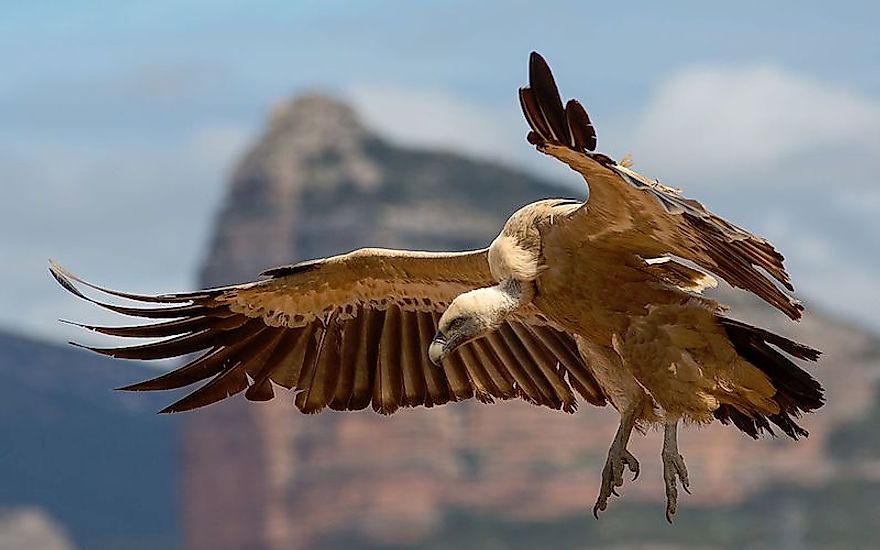
The Old World vultures are a group of birds belonging to the family Accipitridae. The birds live in the "Old World" continents of Europe, Asia, and Africa. The vultures are not closely related to the New World vultures but only superficially similar to these birds due to convergent evolution. The Old World vultures lack a keen sense of smell unlike their New World counterparts. However, both groups of vultures are scavengers and play a vital role in the ecosystem.
16. Palm-nut vulture
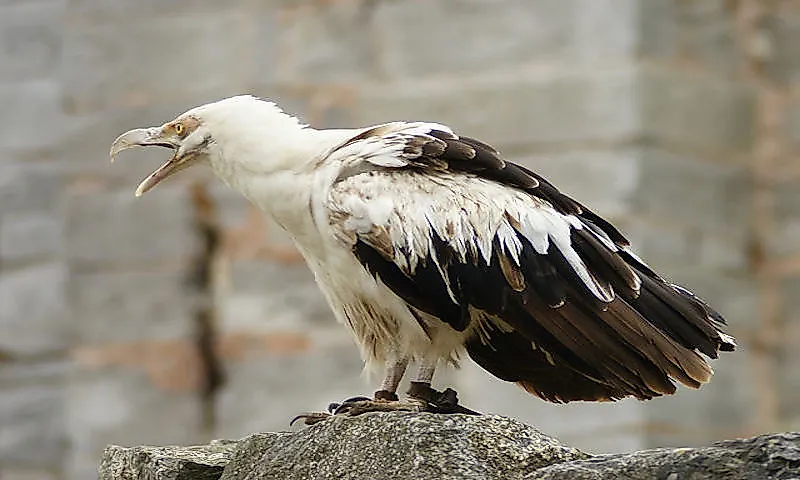
The palm-nut vulture (Gypohierax angolensis) is a large bird-of-prey that feeds mainly on fruits of the oil palm. Molluscs, crabs, locusts, and fish also constitute the prey base of these birds. The palm-nut vulture is also referred to as the vulturine fish eagle, and is found in the forests and savannah throughout sub-Saharan Africa. It lives near water bodies and oil palm groves. The birds can also be seen living near human habitation.
15. Egyptian vulture

The Egyptian vulture or the pharaoh's chicken (Neophron percnopterus), is found in northern Africa, southwestern Europe, and the Indian sub-continent. Although these birds mainly feed on carrion, they occasionally prey on small birds, reptiles, and mammals. The tropical populations of these birds are relatively sedentary while the populations in the temperate regions migrate in the winter to warmer areas in the south. The species is classified as Endangered as hunting, electrocution due to collision with power lines, and accidental poisoning has threatened the survival of these birds.
14. Bearded vulture
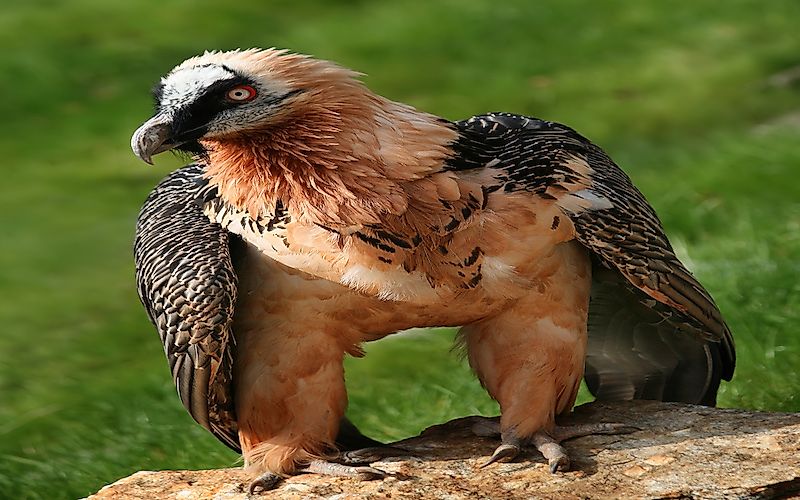
The bearded vulture (Gypaetus barbatus), closely related to the Egyptian vulture, has a lozenge shaped tail that is unusual among birds-of-prey. The bird lives in the high mountain areas of Africa, Caucasus, Europe, and also the Indian subcontinent. The bearded vulture in unique in that it is the only known species in the animal world whose 70 to 90% of the diet is made up of bones. The vulture is a Near Threatened species.
13. White-headed vulture
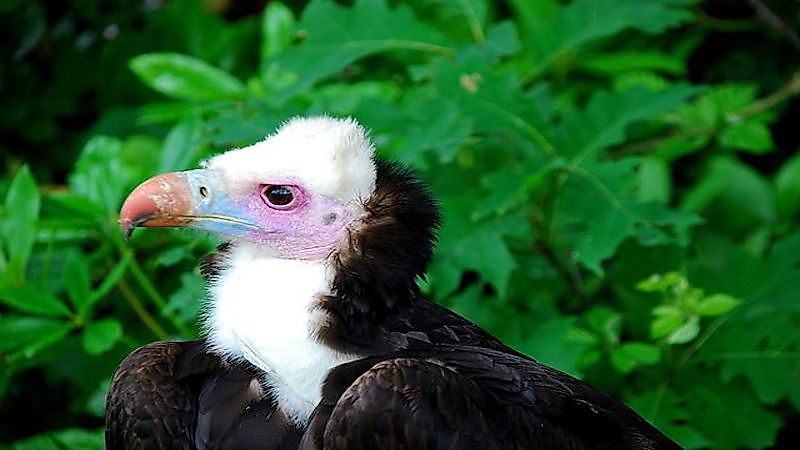
The white-headed vulture (Trigonoceps occipitalis) is an African endemic species of Old World vulture. The bird is medium sized and features a pink beak, white crest and pale naked areas on its head. The tail feathers are black and the upper parts are dark brown in color. The range of the vulture spreads across sub-Saharan Africa. Like most other vulture species, habitat degradation and poisoning threaten the survival of this species which is declared to be Critically Endangered. Hunters poison animal carcasses to kill-off the vultures so that these birds do not draw the attention of forest guards towards illegal kills by the hunters.
12. Lappet-faced vulture
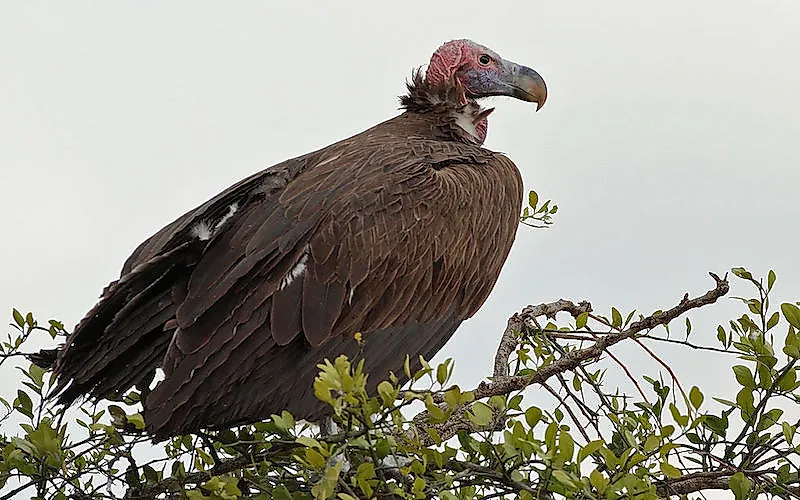
Also known as the Nubian vulture, the lappet-faced vulture (Torgos tracheliotos) is an Old World vulture that lives throughout the African continent. However, the vulture is rare in the continent’s central and western parts. The species is subdivided into two subspecies. The vulture can survive in a wide variety of habitats including deserts, open mountain slopes, dry savannah, and more. The birds also approach human settlements in search of carrion and waste. The birds are currently classified as Endangered by the IUCN.
11. Red-headed vulture
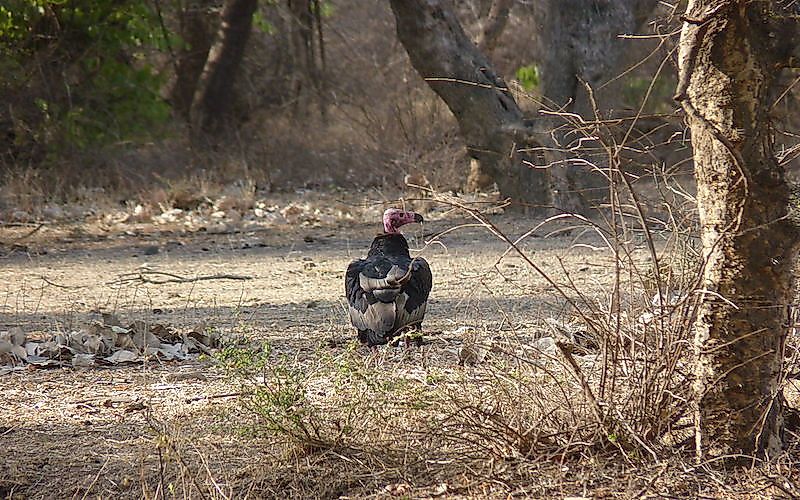
The red-headed vulture (Sarcogyps calvus), also known as the Pondicherry vulture or the Indian black vulture is found primarily in the Indian subcontinent. Small populations are also found in some parts of Southeast Asia. The vulture is medium-sized with a size ranging between 76 and 86 cm. The neck is bare and a deep-red to orange in color. The body is black and a pale gray band features at the base of the flight feathers. The widespread use of the NSAID diclofenace has threatened the survival of these important natural scavengers.
10. Hooded vulture
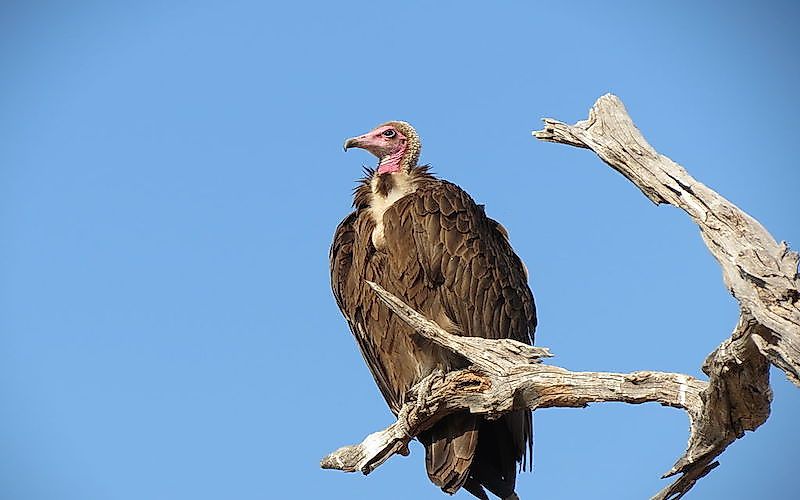
The hooded vulture (Necrosyrtes monachus) is an Old World vulture that is native to sub-Saharan Africa. The small vulture has a dark brown plumage and dark brown colored plumage. Poisoning, habitat loss and hunting have led to the birds being recognized as critically endangered. The hooded vulture breeds in trees and feeds on carrion.
9. Cape vulture
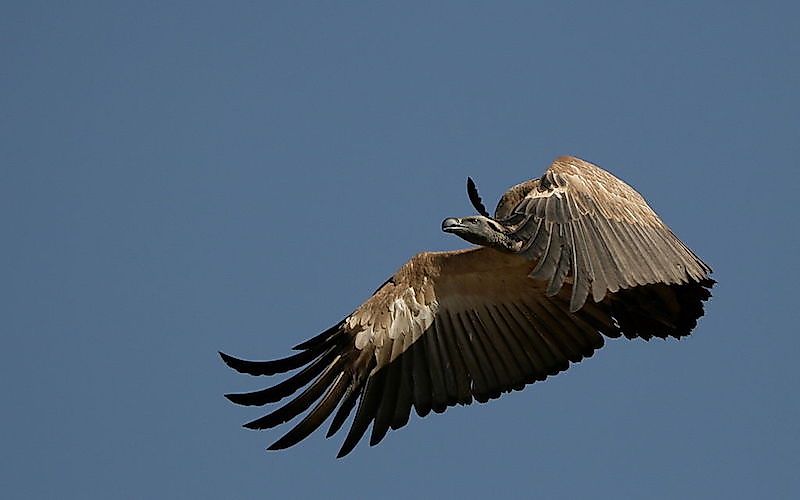
The Cape griffon/vulture (Gyps coprotheres), also referred to as the Kolbe's vulture is a vulture species that is native to parts of southern Africa. The bird’s range includes parts of South Africa, Namibia, Lesotho, and Botswana. Within its range, the bird lives on tall cliffs in or near mountains which allow the bird to easily detect large carcasses. The Cape vulture is classified as Endangered due to its rapidly declining population. Factors like poisoning, harvesting for traditional needs, electrocution, destruction of foraging habitat, etc., threaten the survival of this species.
8. White-backed vulture
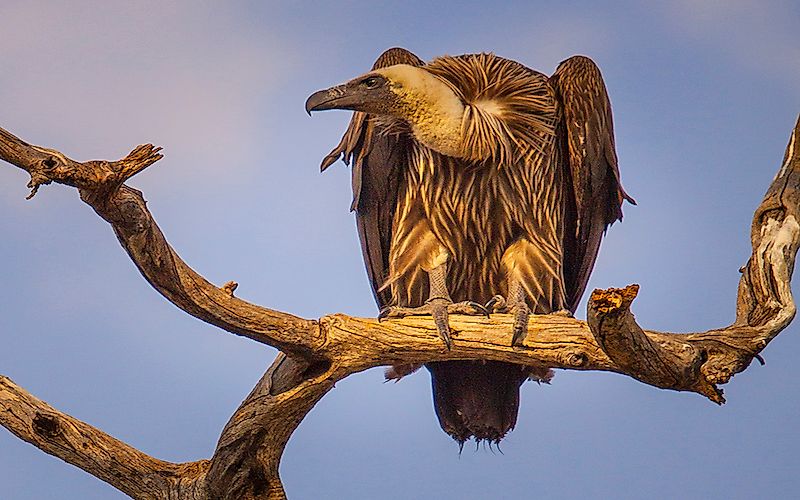
The white-backed vulture (Gyps africanus) is a critically endangered species of vulture that lives in the savannah of east and west Africa. The vulture is medium-sized weighing about 4.2 to 7.2 kg and has a length ranging between 78 and 98 cm. The vulture is a scavenger that feeds on carcasses that its detects by soaring above the savannah. The species is classified as Critically Endangered and several factors like habitat loss, deforestation, poisoning, pollution, etc., have been responsible for this dire state of the vultures.
7. Himalayan vulture
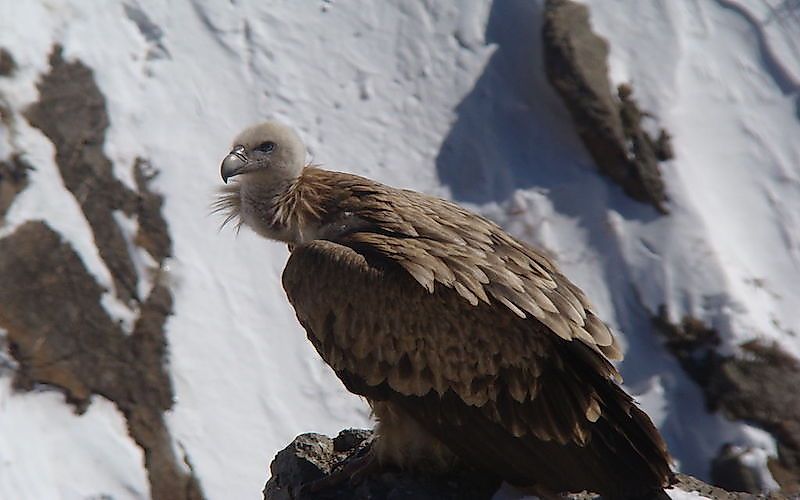
The Himalayan vulture (Gyps himalayensis), one of the largest vulture species, is found in the Himalayan region of the Indian sub-continent and adjacent Tibetan plateau. The bird is often regarded as the heaviest and largest bird of the Himalayan ecoregion. The bird is classified as near threatened. Habitat destruction is one of the important factors threatening these birds.
6. Slender-billed vulture
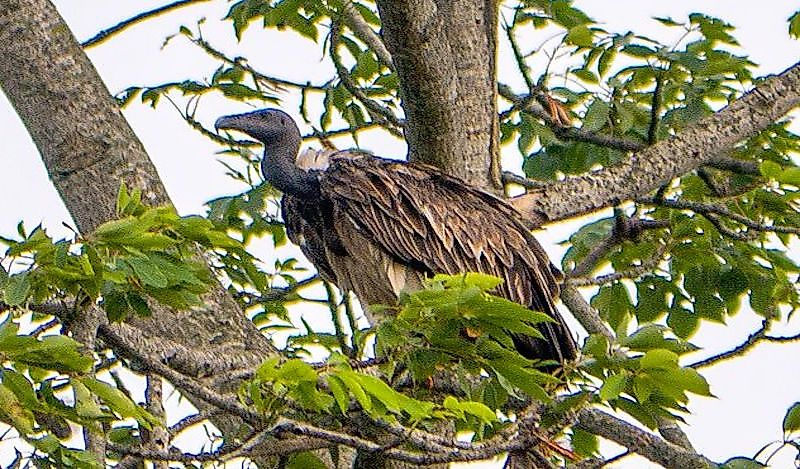
The slender-billed vulture (Gyps tenuirostris) is found across the range stretching from the Sub-Himalayan region of the Indian sub-continent to Southeast Asia. The birds nest on trees, unlike the Indian vulture, its close relative, which breeds on cliffs. Sadly, the slender-billed vulture is classified as critically endangered by the IUCN since it experienced a sharp population decline of 97%, mainly due to diclofenac poisoning. Currently, the retail sale of diclofenac is banned in India and captive breeding programs are conducted to ensure the future survival of the species.
5. Indian vulture
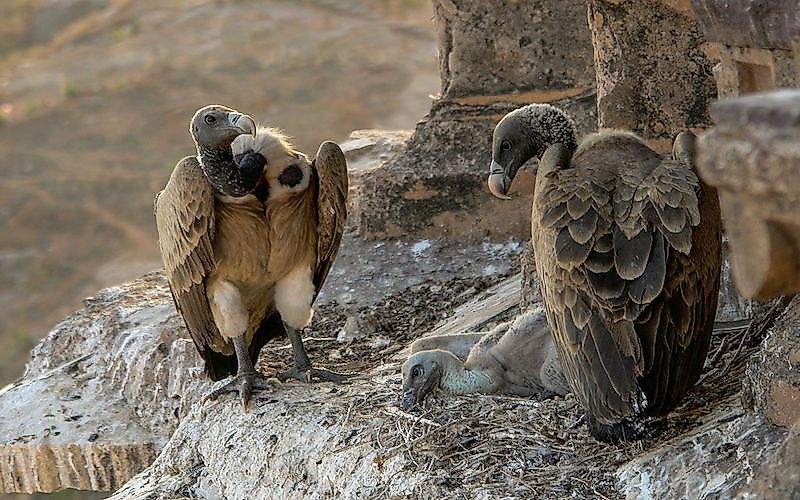
The Indian vulture (Gyps indicus) is native to parts of the Indian sub-continent. The birds have died in masses in the past few decades due to diclofenac-induced renal failure. Feeding on the carcasses of cattle subjected to diclofenac has led to this condition of the vultures. The Indian vulture is thus labeled as a Critically Endangered species. The bird is about 80 to 103 cm long and weighs around 5.5 to 6.3 kg. Conservation efforts have been undertaken to ensure the species is saved from extinction. Diclofenac has been banned in India for this reason.
4. Rüppell's vulture
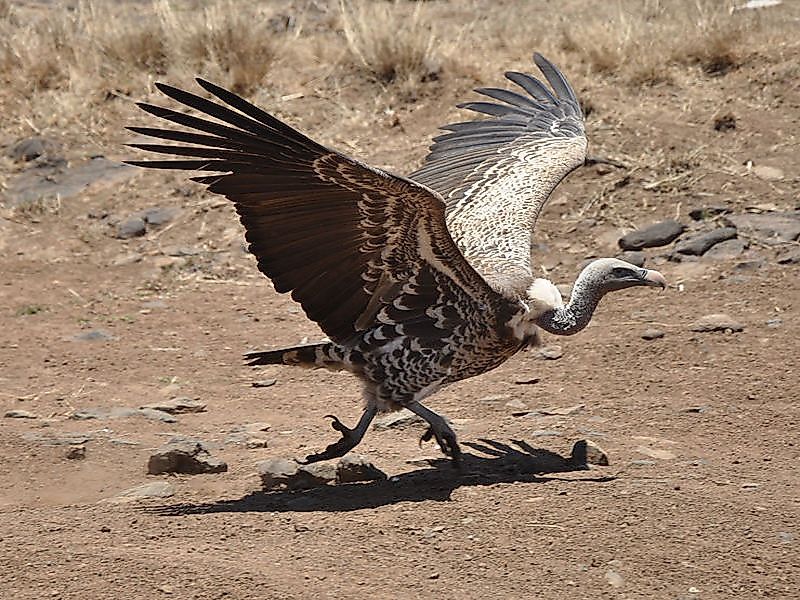
Rüppell's vulture (Gyps rueppelli) lives in central Africa’s Sahel region. The population of this vulture has steadily decreased in the past few decades and this has led to the vulture being declared to be Critically Endangered by the IUCN. Loss of habitat and deliberate poisoning by ivory poachers are the two primary factors that have hastened the population decline of the Rüppell's vulture. The vulture is regarded as the highest flying bird and is known to fly as high as 37,100 feet above sea level. The vulture is named after a 19th-century German explorer and zoologist, Eduard Rüppell.
3. White-rumped vulture
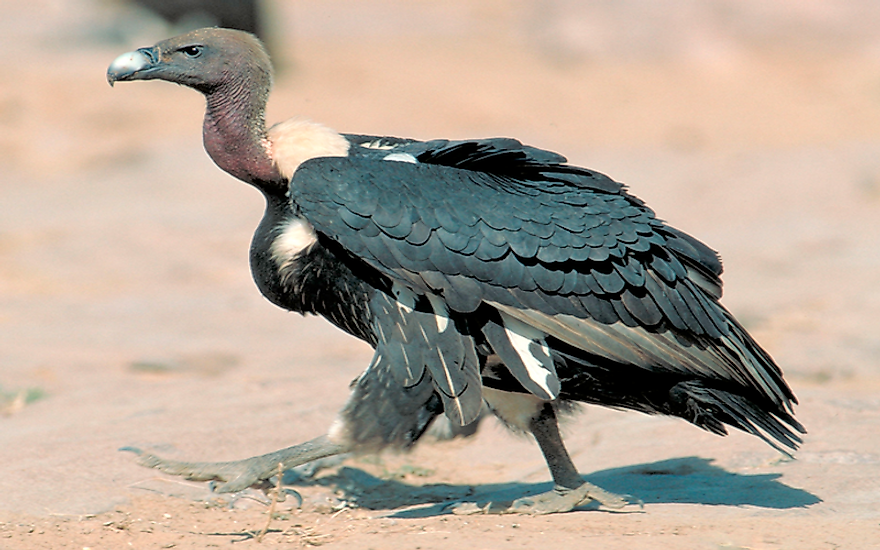
The white-rumped vulture (Gyps bengalensis) is native to South Asia and Southeast Asia. Due to a dramatic decline in the population of this bird, it is currently classified as critically endangered. The birds have suffered death in masses due to renal failure from secondary diclofenac poisoning by consuming carcasses of diclofenac fed cattle. The white-rumped vulture population which numbered about several million in the 1980’s has reduced to less than 10,000 mature individuals as of 2016.
2. Griffon vulture

The griffon vulture (Gyps fulvus) is an Old World vulture species which is widely distributed across Eurasia. The birds have a white head, wide wings, and short feathers in the tail. The buff colored wing coverts and body is in sharp contrast to the dark flight feathers. The griffon vulture is an efficient scavenger that feeds on carcasses of dead animals. Birds of this species can survive up to 41.4 years in captivity.
1. Cinereous vulture
The cinereous vulture, also known as the monk, black or Eurasian black vulture (Aegypius monachus) is distributed throughout Eurasia. It is one of the largest among the Old World vulture species and can weigh as much as 14 kg. The birds feed on carrion of almost any type. The conservation status of the cinereous vulture is classified as near threatened due to habitat loss and hunting.











